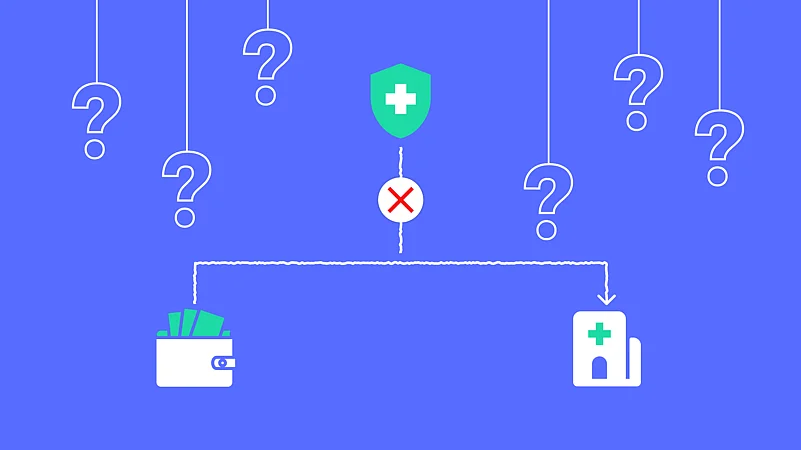At the time of buying a health insurance policy, many people look at the premium amount as one of the core deciding factors. While a comprehensive policy that covers all your needs - and more is great, it may come with a hefty price tag. But what if there was a way for you to strike a balance between affordability and all that coverage you need?
An effective way to reduce your health premium outgo is to opt for higher ‘Out-of-pocket expenses’ or ‘Deductibles’. This option requires a policy buyer to agree to pay a portion of their medical bills before the insurance kicks in.
What is the connection between Deductibles and Premiums?
Health insurance premiums and deductibles share an inverse relationship, when one goes up, the other comes down. In simple terms, if you opt for a low premium plan, it usually means that you will have a higher deductible. On the flip side however, if you want a policy that covers more from the start, you may have to pay a higher premium.
Says Siddharth Singhal, Head of Health Insurance at Policybazaar, “In general, higher deductibles result in lower premiums. This structure helps distribute risk between the insured and the insurance provider:
A low premium, high deductible plan shifts more initial costs to the insured, making it suitable for individuals who expect fewer medical expenses.
A high premium, low deductible plan provides more comprehensive coverage from the start, making it ideal for those who anticipate frequent medical need
“This trade-off allows policyholders to customise their plans based on financial priorities, whether to pay more upfront in premiums for peace of mind or to save on premiums while bearing some risk of higher out-of-pocket expenses,” Singhal states.
How Much Can You Actually Save?
To put this into perspective, let’s take a real-world example. For instance, a 40-year-old healthy male based in Delhi wants to purchase a health plan with a sum insured (SI) of Rs 25 lakh, which comes with an annual premium of Rs 19,000 per year. If the same individual take a top-up insurance with the same SI, but with an option of deductible of Rs 5 lakh, their premium will reduce to approximately Rs 6,000.
Here’s a Policybazaar analysis for your better understanding:
(Here: A stands for Adult and SI stands for Sum Insured, amount in * Rs)
| Plan | Base Premium | Discount by Room Rent Limit | Discount by Network Limit | Discount by 10k Deductible | Discount by 20% Co-pay | (annual, inc taxes) | Plan 1 | 12099 | 917 | 1,274 | 589 | 2548 (at 10 Lakh SI for 1A aged 35 years in Delhi) | Plan 2 | 13390 | 670 | 1091 | 656 | 2678 (at 10 Lakh SI for 1A aged 35 years in Delhi) |
Is This The Right Choice For You?
When going for out-of-pocket expenses, there are some important points to consider. Though this option can save you money on premiums, it is not a one-size-fits-all solution. Why? Let's understand this in two ways;
Who should consider this option?
Young, healthy individuals with minimal medical needs
Those who already have a health insurance from their employer but want an additional cover
Who should avoid this option?
People with pre-existing health conditions who need frequent medical care
Those who have less savings and can’t manage out-of-pocket expenses
Senior citizens without substantial savings and PEDs
Summarises Singhal, “Customers without group health insurance and with frequent medical needs should assess whether premium discounts offer sufficient value given their claim frequency. Those with pre-existing conditions requiring frequent medical care or people with no substantial savings to manage out-of-pocket expenses in case of a medical emergency should avoid these cost-saving measures.”













